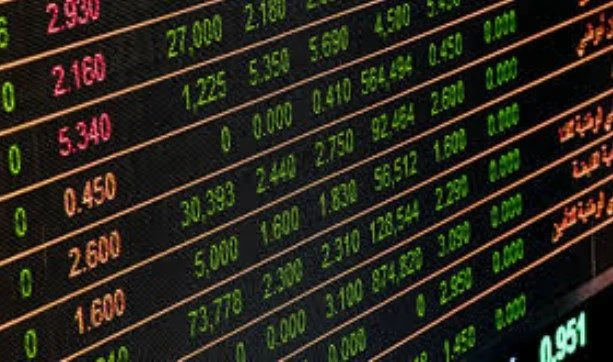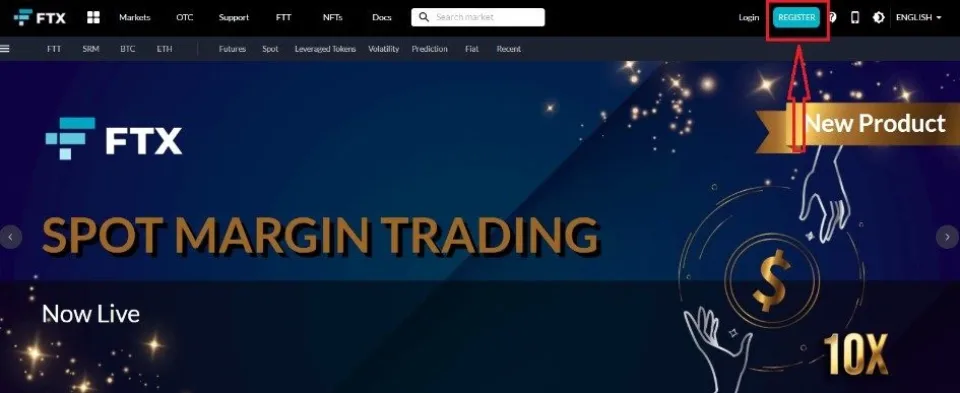FTX Exchange Review
Main Selling Points
Basic Information

Introducing FTX
FTX exchange is a centralized digital coin platform with an extensive crypto trading market and a wide range of products, including futures, leveraged tokens, and spot markets. It is a relatively new entrant into the cryptocurrency exchange space. However, this new kid on the block is giving some of the more established exchanges a run for their money, even big names like Coinbase and Kraken. The marketplace boasts a total value locked (TVL) of over $13 billion, which makes it a top five derivatives exchange in the world. It’s developed to meet the needs of experienced crypto traders, but this doesn’t mean that newbies are locked out. Keep in mind, however, that as a first timer, you will need to go through a learning curve that may last as per your learning ability. It has partnered with some of the biggest names in the cryptocurrency industry, such as Alameda Research, Binance, and OKCoin. Today, we’ll take a closer look at FTX and determine whether it’s a safe and legit platform to store and trade your digital assets. Let’s dive straight into it.
Pros and Cons of FTX Exchange
- Pros
- Supports futures and margin trading
- Offers access to advanced markets
- Low trading fees
- Reasonably secure exchange
- Cons
- Limited cryptocurrency collection compared to other exchanges
- Complicated withdrawal process
FTX Trading Company Overview
Founding Team

FTX Trading Limited is the company behind the FTX Exchange. The company was founded in 2019 as a subsidiary of FTX Global, which itself is a subsidiary of Alameda Research. Alameda Research, on the other hand, is one of the biggest quantitative trading firms in the world with over $800 million in daily trading volume. Sam Bankman-Fried, the CEO of FTX and Alameda Research was the main force behind the exchange. Other notable members of the team include Gary Wang, Head of Business Development and an early investor in Huobi; Robert Dykes, the Chief Compliance Officer and previously the Director at CME Group; and Jonathan Qu, the Chief Product Officer and a former engineer at Google.
The firm has partnered with some of the biggest names in the cryptocurrency industry, such as Binance, OKCoin, and Blockfolio. In fact, at one point, Binance actively funded FTX.
FTX Exchange Trading Market Share

The platform is currently the fourth-largest derivatives exchange in the world with a total value locked (TVL) of over $13 billion. The exchange sits at position four on CoinMarketCap’s official ranking and boasts a market cap of $3,700,833,976. This is pretty good for an exchange that’s barely three years old. What’s more, the site has about 134,330,778.27 million FTT tokens in circulation. During its short period of operation, it has managed to garner a significant user base of slightly over 1 million users. Plus, with an ever-expanding crypto market, the platform seems to be attracting both novice and expert crypto investors.
FTX Exchange License and Insurance

The firm is a fully licensed and insured exchange. The company behind FTX, FTX Trading LTD, is licensed by the Financial Services Regulatory Commission (FSRC) of Antigua and Barbuda. As mentioned earlier, some of the licenses the exchange has include an MSB license, a DCM license, and an SEF license.
The platform was thought to be insured by the Federal Deposit Insurance Corporation (FDIC) until recently when it was slapped with a cease-and-desist order by the institution over “false and misleading statements.” This means that FTX isn’t insured by any insurance provider, especially the FDIC.
FTX Exchange Reputation and Security

The site enjoys a solid reputation in the crypto community. It has never been hacked or had any major security breaches. However, in September last year, rumors started to circulate that the exchange had been hacked and lost 45,000 bitcoins worth about $2 billion. The CEO, Sam Bankman-Fried, came out to dispel the rumor and assure the safety of all assets on the platform. Despite this rumor, its reputation remains intact, and the platform continues to enjoy a large following from the crypto community.
The platform uses state-of-the-art security, industry-standard features such as two-factor authentication, cold storage for the majority of its digital assets, and more. It also has a bug bounty program that encourages white-hat hackers to report any vulnerabilities they find on the FTX platform in exchange for rewards. Let’s take a closer look at FTX’s security features.
FTX Security Features
FTX exchange boasts a robust security setup for protecting users’ assets and keeping hackers and malicious software at bay. Some of the platform’s top security features include.
- Multi-factor authentication (2FA): FTX exchange requires all users to enable two-factor authentication (also known as two-step verification) for an extra layer of security. This means users must enter their passwords and a code generated by an authenticator app such as Google Authenticator or Authy. It’s practically impossible for a hacker to access your funds unless you give them access to your authenticator.
- Cold storage: The site stores the majority of its digital assets in cold storage, which is offline and not connected to the internet. This makes it much harder for hackers to steal FTX’s digital assets since there’s literally no way for hackers to access them except to physically go to the server. FTX only keeps a small percentage of its assets in hot wallets for operational purposes.
- Bug bounty program: The platform has a bug bounty program that encourages white-hat hackers to report any vulnerabilities they find on the FTX exchange platform in exchange for rewards. The company team then works to fix the vulnerabilities as soon as possible. These vulnerabilities include payment manipulation, remote code execution (RCE), database vulnerabilities, and many more.
- Withdrawal lock: The site allows users to set a withdrawal lock that requires multiple FTX account holders to confirm any withdrawals made from the account. This is an extra security measure to ensure that only authorized FTX users can make withdrawals from an FTX account.
- Third-part monitoring: FTX exchange has partnered with several security firms to monitor systems 24/ 7. It uses a combination of automated and manual monitoring systems to detect any suspicious activity on the platform.
Complaints Received
A brief look at authority review sites shows that most of the complaints received about FTX revolve around its customer service. With no customer support hotline, it’s hard for users to air out their grievances and get prompt responses. Instead, users have to submit customer support tickets with no definite response time. It’s not uncommon for users’ queries and complaints to go completely unanswered. There have also been several complaints about the platform’s interface, with some users claiming sometimes the interface stops working completely. What’s more, the platform has a lengthy and complicated withdrawal process that can be downright frustrating. Although rare, a few users also complain that their money disappeared entirely after depositing it to FTX.
How Secure is FTX Exchange?
FTX exchange is a secure and legit cryptocurrency exchange with robust security features, including two-factor authentication, cold storage for the majority of its digital assets, a bug bounty program, withdrawal lock, and third-party monitoring. It’s among the handful of exchanges that can boast of never having had a single hacking incident.
The above was a statement we made before the latest alleged hacking incidents that have happened since FTX became insolvent.
Staking:
Users can stake their cryptocurrencies and earn interest on their holdings. The platform currently supports staking for 4 different digital assets, including Solana (SOL), Raydium (RAY), FTX Token (FTT), and Serum (SRM). With staking, users can earn up to 8% annualized interest on their holdings.
Exchange Token:
The site boasts its very own exchange token known as FTX Token, or FTT. FTX Token holders enjoy a host of benefits, including discounts on trading fees, interest on their holdings, and access to exclusive features. What’s more, users can stake their FTT and earn rewards for their holdings.
Perpetual Futures Contracts:
The platform offers perpetual futures contracts that allow users to trade cryptocurrencies with leverage. These contracts are different from traditional futures contracts in that they don’t have a set expiry date. FTX exchange currently offers perpetual futures contracts for Bitcoin (BTC), Ethereum (ETH), Litecoin (LTC), EOS, Ripple (XRP), and USD.
Asset Classes
You will find various asset classes on the exchange. Here are the most outstanding ones:
- Cryptocurrencies: You will find over 50 different digital assets, including Bitcoin (BTC), Ethereum (ETH), Ripple (XRP), Litecoin (LTC), and more. Users can also swap their cryptocurrencies for other types within the platform.
- NFTS: FTX also supports NFTs, or non-fungible tokens. These are digital assets that represent real-world assets, such as artworks, sports memorabilia, and more. FTX currently supports NFTS from major projects, such as Decentraland (MANA), Axie Infinity (AXS), and Gods Unchained
- Utility tokens: FTX exchange supports several utility tokens, including Binance Coin (BNB), FTX Token (FTT), and Huobi Token (HT). FTX also accepts utility tokens built on the Ethereum blockchain. These include popular ERC-20 tokens such as Chainlink (LINK), Compound (COMP), and Maker (MKR).
- Stablecoins: Stablecoins are digital assets that seek to maintain a consistent price regardless of the volatility in the market. They are usually backed by a stable currency like the dollar. The marketplace supports several stablecoins, including USD coin (USDC), Tether (USDT), and Paxos Standard Token (PAX). Stablecoins are pegged to actual assets traded on various markets.
- Crypto derivatives: FTX offers several crypto derivatives that allow users to trade on the future price of digital assets. These derivatives include futures, options, and leveraged tokens. FTX also offers perpetual futures contracts that don’t have a set expiry date.
Leverage:
FTX exchange offers margin trading for a selection of digital assets. With this, users can trade with leverage and amplify their gains. Of course, this means losses can exceed normal levels too. The site currently offers margin trading for Bitcoin (BTC), Ethereum (ETH), Litecoin (LTC), EOS, Ripple (XRP), and USD. However, only users with marginal balances in specific assets can margin trade. The leverage is set at a maximum of 20x, meaning you can trade with up to twenty times your crypto holding.
OTC Desk
FTX is one of the few exchanges that have OTC desks. An OTC desk means that FTX exchange can match large trades without affecting the price of the underlying asset. FTX’s OTC desk is available to users trading over $100,000 worth of digital assets. This means users, including businesses, can trade large amounts of crypto without worrying about affecting asset prices.
Other Notable Features
- Perpetual Futures Contracts: FTX offers perpetual futures contracts that allow users to trade cryptocurrencies with leverage. These contracts are different from traditional futures contracts in that they don’t have a set expiry date. FTX currently offers perpetual futures contracts for Bitcoin (BTC), Ethereum (ETH), Litecoin (LTC), EOS, Ripple (XRP), and USD.
- MOVE Smart Contracts: FTX has its own smart contract language known as MOVE. With MOVE, it can offer derivatives that are not possible on other platforms. For example, FTX offers a “BOMB” token that pays out rewards when prices go down. It also offers an “INVERSE” token that pays out rewards when prices go up.
- Market prediction: You will find a market prediction feature that allows you to predict the price of digital assets. Users can win FTX tokens if they correctly predict the price movement of an asset.
- Telegram bot: The site’s telegram bot is an advanced feature for taking trades directly from telegram. The bot supports features such as stop-loss and take-profit orders, which makes trading a breeze.
FTX Payments
Deposit and Withdrawal Methods
FTX supports several deposit and withdrawal methods, including wire transfer, ACH bank transfer, credit/debit card, and crypto. Consider transaction fees, processing time and convenience when selecting your ideal, method.
Deposit or Withdrawal Limits
You will be subjected to varying deposit and withdrawal limits depending on your preferred method. Here is a breakdown.
- Wire Transfer: Minimum deposit is $20, and least withdrawal is $100.
- ACH Bank Transfer: Minimum deposit is $20. The lowest cashout is $100.
- Credit/Debit Card: A limit of $5 for deposit and $50 for withdrawal.
- Crypto: No limit.
FTX Fees
FTX exchange has a tiered fee structure that starts at 0.02% and goes as low as 0.00075%. FTX also offers a rebate program that pays users back 0.025% of the fees they’ve paid. It’s also worth noting that FTT holders are eligible for certain discounts on the said fees. Plus, FTX’s mobile app (formerly Blockfolio) doesn’t charge any fees on transactions.
Users pay a deposit and withdrawal fee, depending on the transaction amount. Withdrawals above $5,000 are free on both PC and mobile. Users also get one free wire withdrawal every week. They also get a free deposit at ACH Bank every week for more than $10.
Visit the website and sign up for an account.

Step 2: Login
Sign into your account and navigate to the right top corner to hover over “Wallet.” Hit the “Portfolio” button. This will take you to the wallet interface.
Step 3: Deposit funds
Hit the “deposit” button and follow the instructions to fund your FTX exchange account. Remember you have a choice of over five payment options.
Step 4: Start trading
Once your account is loaded with funds, you can start trading your favorite assets.
FTX User Experience
FTX exchange is available on PC and also has a mobile app that’s available for both iOS and Android devices. Here’s a brief look at both interfaces.
Desktop
The FTX exchange desktop platform is best suited for advanced traders. It has a clean and simple interface with all the features that a trader would need. The platform also has an interactive charting tool that’s perfect for technical analysis.
Once you’ve logged in, you’ll be taken to the main dashboard, where you can see all the markets that are available for trading. You can also see your account balance and recent trades. To place a trade, simply click on the market you want to trade and enter your order details.
Mobile App
FTX’s mobile app is available for both iOS and Android devices. The app has a clean and simple interface that’s similar to the desktop platform. However, the mobile app doesn’t have all the features that are available on the desktop platform. You can also trade using the FTX telegram bot on your phone on the go. This is an automated mobile feature that allows you to integrate your platform and telegram for easy execution of orders.
FTX Customer Service
FTX’s customer service wasn’t as responsive as we expected. For starters, the platform didn’t have a hotline, so we couldn’t speak directly to customer support agents. We used the available option, which was sending an email. Unfortunately, it took about 13 hours to get the first response. This is a terrible response time, especially if you’re dealing with an emergency. We turned to the site’s social media platforms and to our surprise, we received overwhelming responses from the community on Twitter, Facebook and Telegram.
How Does FTX Compare to Other Exchanges?
The exchange space in the crypto world is characterized by nothing less than cut-throat competition. While FTX exchange is an incredible platform, it faces stiff competition from the likes of Binance, Coinbase, Kraken, and Gemini. Notwithstanding the fact that FTX only came out about two years ago. Let’s look at how FTX compares to some of the other exchanges.
FTX vs. Kraken Exchange
Kraken is one of the oldest and most popular cryptocurrency exchanges. It was founded in 2011 and is based in San Francisco, USA. Kraken supports a wide range of cryptocurrencies and also offers margin trading with up to 50x leverage.
FTX, on the other hand, is a much newer exchange that only came out in 2019. The exchange is based in Hong Kong and supports a wide range of cryptocurrencies. FTX also offers margin trading with up to 100x leverage.
In terms of cryptocurrency support, FTX exchange and Kraken are on par with each other. FTX supports around 50 cryptocurrencies, while Kraken supports around 60. When it comes to fees, FTX is slightly more expensive than Kraken. FTX charges a 0.07% taker fee and a 0.02% maker fees, while Kraken charges a 0.26% taker fee and a 0.16% maker fees.
Where FTX really shines is in the margin trading department. FTX offers up to 100x leverage, while Kraken only offers up to 50x leverage. So, if you’re looking for an exchange that offers high leverage, then FTX is the exchange for you.
FTX vs. Binance Exchange
Binance is another popular cryptocurrency exchange. Founded in 2017, Binance has grown to become one of the largest exchanges in the crypto space. Binance supports a wide range of cryptocurrencies and also offers margin trading with up to 125x leverage. FTX also offers margin trading with up to 100x leverage, meaning Binance takes the cake in that regard.
In terms of how many cryptocurrencies each supports, FTX takes the lead. FTX supports around 50 cryptocurrencies, while Binance only supports around 40. When it comes to fees, FTX charges a 0.07% taker fee and a 0.02% maker fee. Binance, on the other hand, has a tiered fee structure that starts at 0.05% for users with a daily trading volume of less than $100,000.
When it comes to security, both FTX and Binance are pretty evenly matched. FTX uses cold storage to keep the majority of its cryptocurrency reserves offline and out of the reach of hackers. Binance also uses cold storage for the majority of its cryptocurrency reserves.
Binance does have a few advantages over FTX exchange, such as a more user-friendly interface and a mobile app. FTX recently released its mobile app, but it’s due for some improvement. Binance is the better choice if you use your smartphone to trade crypto.
Is FTX Exchange Right for You?
FTX might not be the right exchange for everyone. Although it’s already one of the fastest growing exchanges, we found it most ideal for expert traders. Beginners might need to go for sites that offers quick support and are more intuitive that this one. Experienced traders and high rollers, on the other hand, will enjoy the platform’s low prices and unique features like the OTC desk.
Final Verdict
FTX is a great exchange with a lot to offer its users. The exchange has low fees, a wide range of supported cryptocurrencies, and margin trading with up to 100x leverage. FTX also boasts a wide array of products and features and is also one of the most secure exchanges in the crypto space. If you’re a seasoned crypto trader, then FTX is definitely worth looking at.
FAQ
What are the benefits of using FTX?
What are the benefits of using FTX?
FTX exchange offers low fees, a wide range of supported cryptocurrencies, margin trading with up to 100x leverage, and a host of other products and features.
What are the Key features of FTX exchange?
What are the Key features of FTX exchange?
The crypto exchange has multiple unique functionalities such as staking and token exchange. In addition, it supports stablecoins, derivative trading and NFTs.
How easy is it to use FTX?
How easy is it to use FTX?
FTX’s user interface could do with a bit of work because it doesn’t have the most intuitive one. There have been quite a few complaints about links not working or the screen freezing. Hopefully, the platform will work on these issues ASAP.
What are the fees associated with using FTX exchange?
What are the fees associated with using FTX exchange?
FTX exchange charges a 0.07% taker fee and a 0.02% maker fee. The platform also charges withdrawal fees, and they vary depending on the cryptocurrency being withdrawn.
How Secure is FTX exchange?
How Secure is FTX exchange?
FTX exchange is a secure exchange because it uses cold storage for the majority of its cryptocurrency reserves. The platform also has two-factor authentication (which can be turned on in the security settings) to add an extra layer of security for users.
What customer support does FTX exchange offer?
What customer support does FTX exchange offer?
FTX offers a help center where you can submit your help ticket to get assistance with your issue. The team is also responsive to emails and will usually get back to you within a few hours. You can also find help on various social media platforms.
What payment methods are supported on FTX?
What payment methods are supported on FTX?
FTX exchange supports a wide range of payment methods, including bank transfers, credit/debit cards, and crypto. You can find the full list of supported payment methods on FTX’s official website.
Are there any restrictions on who can use FTX?
Are there any restrictions on who can use FTX?
FTX exchange is available to users all over the world. However, there are some countries that are restricted, such as the United States, Cuba, Iran, North Korea, and Syria. For the US, users will have to settle for FTX’s sister account, FTX.US.
How liquid is FTX?
How liquid is FTX?
FTX is a highly liquid exchange with a lot of trading volume. Not only does FTX support a wide range of cryptocurrencies, but it also offers multiple deposit and withdrawal options.

Facts Checked by Josip Putarek, Senior Author






